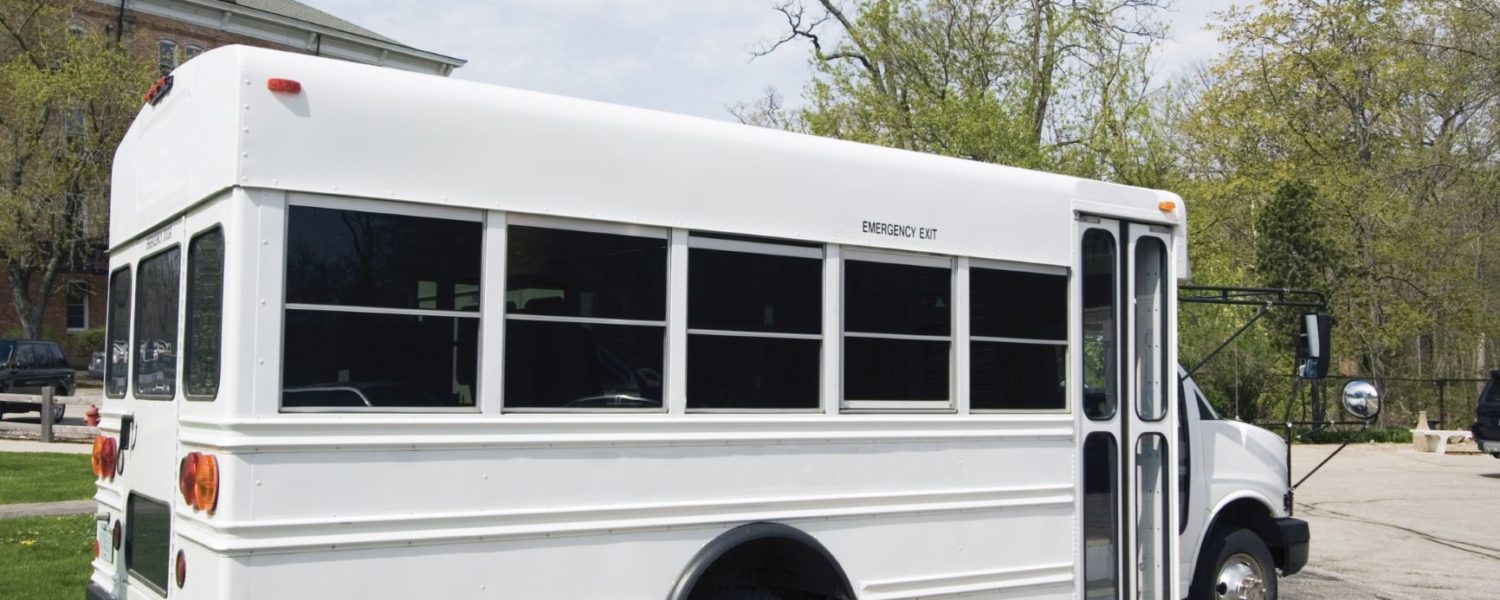This article first appeared in the January 2010 issue.
This article is courtesy of The Bus Company, www.thebuscompany.net.
Considering buying a refurbished bus for your church’s transportation needs? Here are 10 considerations to factor into your selection process.
Tip #1
Number of Passengers
One of the most important elements to consider when purchasing your next bus is the passenger capacity. You will not want to purchase too small of a bus. When purchasing your next church bus, calculate for both your current and possible future growth in transportation.
A very common size bus for church groups is the 25-passenger shuttle bus. This size is the largest bus you can purchase on a Ford or Chevy 1 ton chassis. It is large enough to transport a good size group but small enough to be easily maneuvered.
Tip #2
Bus Purchasing Budget
In the bus market, you will finds buses priced from the lowest of lows to the highest of highs. It is also said that “you get what you pay for.” This is very true!
Typically, buses that are priced very low will need work performed to make them reliable and presentable buses. The totals for the repairs can sometimes equal the initial purchase price.
When purchasing a bus, you are not always better buying cheap or even buying new. There are many buses on the market in good condition for more than half the price of a new bus. Buses can be very expensive to repair. Good, reliable, well-looking buses generally sell from $15,000 to $30,000 depending on the size, year, and quality.
Tip #3
Comparing Gasoline to Diesel Engines
It is well-known that diesel engines run and perform longer then the gasoline engines. Today’s engines have been designed to run and perform much longer than the engines of the past. Many diesel engines will perform well on original equipment up to 500,000 miles, and gasoline engines will perform well up to 300,000 miles.
Although the diesel engines perform almost 40 percent longer, the price to replace diesel engines is double the cost of gasoline engines. General maintenance on diesels can also cost more money. They hold up to four gallons of oil, the oil filters are larger, and they really should have the fuel filters changed every time the oil is changed.
For most customers, the gasoline engines will provide all the power and longevity they will ever need. For anyone who drives over 20,000 miles per year, we suggest a diesel engine. Most owners of buses who acquire 20,000 or more miles a year are tour companies who have the buses running all day and sometimes in very extreme climates.
So, when it comes to a diesel or gas engine, you need to first calculate how many miles a year you will be driving and under what circumstances.
Tip #4
Automatic and Manual Transmissions
One frequent question buyers have about the drive trains of small shuttle and midsize buses is about the transmissions. Are they manual or automatic? All 1 ton Ford and Chevy bus chassis only come with automatic transmissions. The same goes for the midsize Ford, Chevy, Freightliner, and International chassis.
The average automatic transmissions in the 1 ton chassis will perform up to 150,000 miles depending on driving conditions and service schedule. The larger midsize Freightliner and International chassis have the Allison transmission, which last even longer. Manual transmissions are only found in the larger commercial passenger touring buses.
Tip #5
Air Conditioning Systems
Another critical system of a bus is the air conditioning system. This can make a bus ride very comfortable or very miserable. A/C systems can be very expensive and complicated to repair. Each bus will have many feet of high pressure hoses, fittings, and wires that make each A/C system function. If any of these components fail, the entire system will fail.
It is always smart to have professional trained technicians inspect, diagnose, and repair any air conditioning problems. Make sure to have the A/C system inspected before purchasing the bus.
Tip #6
Different Styles of Bus Seats
Buses come with many different seating styles and configurations. When determining which style and configuration best fits your needs, you will first need to determine the bus’s main usages. Short-trip transit buses use a completely different style of seat than the longer traveling trips.
The mid-back style seats are less expensive and are great for in-town routes and short trips. High-back reclining seats are more expensive and are generally for long-distance trips.
Seats are easy to change, but they are expensive to replace. Seats can cost from $100 to $300 each with brackets. When purchasing your bus, consider which style of seats best suits your bus’s purpose.
Tip #7
Luggage Compartments
Most small shuttle buses and mid-size buses do not have luggage compartments. The most common place for luggage in a bus is in the rear. If your bus has a back door, you can simply remove the last row of seats and have sufficient luggage space.
If you would like luggage space without losing any seats, buses can be custom fitted with overhead compartments. These compartments work great for carry-on bags, purses, and briefcases. Overhead compartments will not accommodate large suitcases.
Buses are generally too low to the ground to add under storage to the chassis. When purchasing your next bus, you have two luggage options: (1) remove the last row of seats or (2) install custom overhead compartments.
Tip #8
Taxes
All states, counties, and cities have different tax rates and fees. You will pay taxes when you go to your local department of motor vehicles to obtain a license for your bus. You should never pay any tax when purchasing the bus from a dealer, private organization, or individual.
Tip #9
Bus Licensing and CDL Requirements
Drivers have been required to have a CDL in order to drive a CMV since April 1, 1992. The Federal Highway Administration (FHWA) has developed and issued standards for testing and licensing CMV drivers.
Among other things, the standards require states to issue CDLs to their CMV drivers only after the driver passes knowledge and skills tests administered by the state related to the type of vehicle to be operated. Drivers need CDLs if they are in interstate, intrastate, or foreign commerce and drive a vehicle that meets one of the following definitions of a CMV:
Class A: Any combination of vehicles with a GVWR of 26,001 or more pounds provided the GVWR of the vehicle(s) being towed is in excess of 10,000 pounds.
Class B: Any single vehicle with a GVWR of 26,001 or more pounds, or any such vehicle towing a vehicle not in excess of 10,000 pounds GVWR.
Class C: Any single vehicle, or combination of vehicles, that does not meet the definition of Class A or Class B, but is either designed to transport 16 or more passengers, including the driver, or is placarded for hazardous materials.
Tip #10
Service Records and Vehicle History
Since all buses are considered commercial vehicles, most companies will have service records and vehicle history reports. It is very important to know a bus’s maintenance history and if any recent repairs have been made.
A bus has many mechanical and electrical parts. It can be very helpful in the future to know what has been done to a bus and what may need fixed. This is also a way for both sellers and customers to prove a bus’s condition. Good, reputable sellers will always supply customers with service records, vehicle history, and recent work performed.






